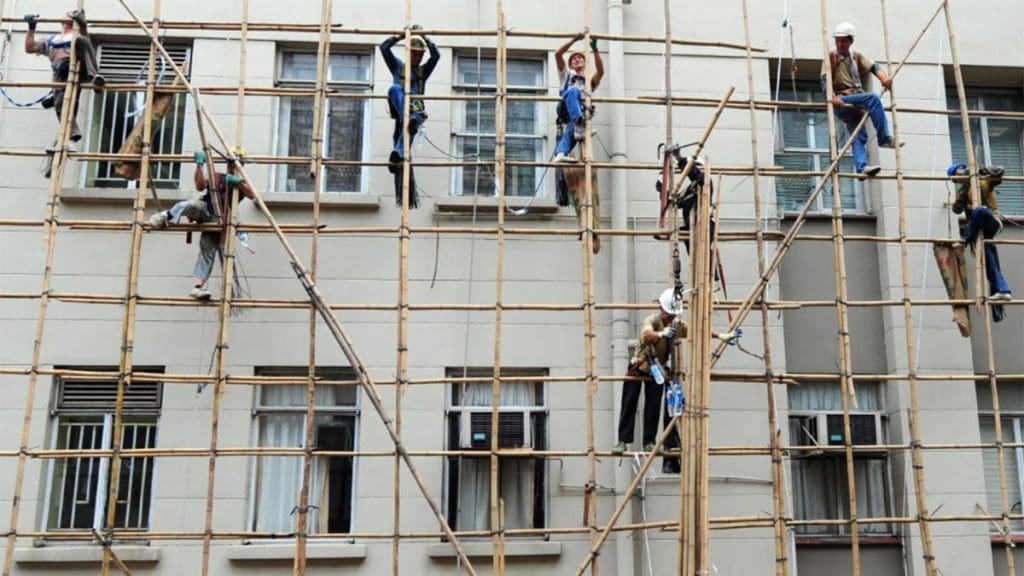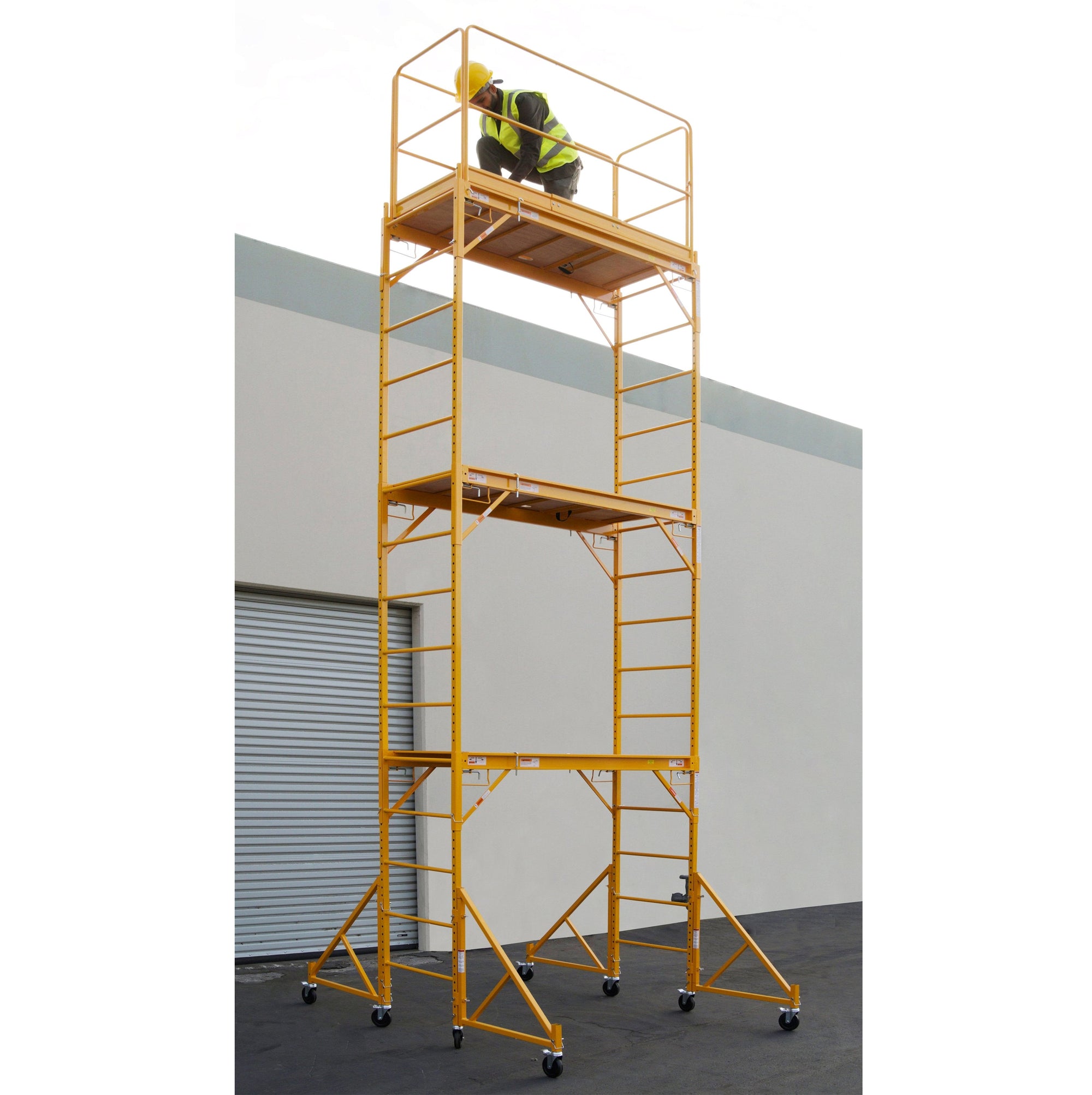Get the Best Scaffolding Cobham Services for Your Building Projects
Get the Best Scaffolding Cobham Services for Your Building Projects
Blog Article
Discovering the Numerous Kinds Of Scaffolding Used in Building Projects
The building market relies heavily on various types of scaffolding to satisfy specific project demands, each offering distinct benefits and applications. Typical frame scaffolding offers a sturdy foundation for basic tasks, while put on hold scaffolding is important for work on skyscraper frameworks.

Standard Frame Scaffolding
Traditional structure scaffolding is among the most extensively used techniques in the building industry because of its robustness and adaptability. This system includes upright and straight frames that are constructed to produce a steady platform for products and employees. The primary components include vertical blog posts, horizontal journals, and angled braces, which with each other offer a strong structure that can sustain considerable lots.
Among the key advantages of standard structure scaffolding is its adaptability to different building and construction tasks, ranging from household structures to large industrial frameworks. The modular design allows for easy setting up and disassembly, making it reliable for both lasting and short-term projects. Furthermore, the system can be personalized in elevation and width, accommodating various building styles and website problems.
Safety is extremely important in scaffolding applications, and traditional frame systems are equipped with guardrails and toe boards to avoid falls and make sure employee protection. In addition, normal examinations and adherence to security laws are vital in preserving the integrity of the scaffold. Generally, typical structure scaffolding continues to be an essential option in the building industry, giving a trusted platform for labor and improving overall project effectiveness

Suspended Scaffolding
Put on hold scaffolding provides an unique service for building and construction projects that require access to raised surfaces, specifically in circumstances where standard framework scaffolding might be not practical. This kind of scaffolding is generally suspended from the roof covering or upper levels of a structure, utilizing a system of pulley-blocks, systems, and ropes to develop a functioning room that can be adjusted to various heights.
Among the key benefits of put on hold scaffolding is its flexibility. It can be easily rearranged or lowered to suit modifications in building and construction needs, making it suitable for tasks such as window setup, frontage work, and maintenance on high-rise structures. Furthermore, the very little footprint of suspended scaffolding enables much better use ground space in city atmospheres, where room is commonly restricted.
Security is a critical consideration in using suspended scaffolding. Correct rigging and anchoring systems must be utilized to guarantee security and avoid crashes. Operators should additionally be learnt the secure use this equipment. On the whole, suspended scaffolding offers a effective and reliable solution for accessing hard-to-reach locations in numerous building and construction scenarios, boosting both efficiency and safety on site.
System Scaffolding
System scaffolding, often considered as a contemporary service in the scaffolding industry, contains pre-engineered components that can be quickly constructed and adjusted for different building jobs. Scaffolding. This kind of scaffolding is characterized by its modular layout, which enables for convenience and effectiveness on task websites, fitting architectural demands and various heights
Typically made from high-strength steel or light weight aluminum, system scaffolding offers improved longevity and security. The parts consist of vertical posts, straight journals, and angled braces, which adjoin firmly, ensuring a robust structure. The style typically incorporates standardized installations, streamlining assembly and disassembly processes, thereby reducing labor time and costs.

Rolling Scaffolding
Moving scaffolding is a versatile option to traditional set scaffolding, designed for wheelchair and ease of usage on building and construction sites. This type of scaffolding is composed of a system supported by click to investigate frameworks with wheels, permitting workers to conveniently transfer it as required. The wheelchair function significantly improves efficiency, my site as it reduces downtime linked with putting together and taking apart dealt with scaffolding.
Normally constructed from lightweight materials such as aluminum or steel, rolling scaffolding supplies a sturdy yet mobile solution for tasks calling for constant repositioning - Scaffolding. It is particularly beneficial in tasks such as painting, drywall installation, and electrical work, where access to different heights and areas is essential
Security is vital in rolling scaffolding design, with attributes such as locking wheels to avoid unplanned motion when being used, and guardrails to shield workers from drops. Furthermore, several versions are flexible in elevation, suiting different job needs.
Cantilever Scaffolding

The layout of cantilever scaffolding commonly includes making use of brackets or arms secured to a building or framework, making it possible for the platform to extend exterior securely. Safety is extremely important; thus, these scaffolds need to be crafted to stand up to ecological problems and various lots. Regular inspection and upkeep are vital to guarantee structural integrity and employee security.
Cantilever scaffolding is preferred for its adaptability and effective use area, making it a preferred selection in city atmospheres where room restraints are common. Moreover, it assists in easier access to high altitudes, eventually adding to the overall efficiency of building jobs. Just like all scaffolding types, proper training and adherence to security criteria are crucial for employees making use of cantilever scaffolding.
Verdict
Typical frame scaffolding supplies security, while suspended scaffolding offers convenience for elevated jobs. System scaffolding promotes quick setting up, and rolling scaffolding boosts movement for varying job settings.
Traditional framework scaffolding offers a sturdy foundation for basic tasks, while put on hold scaffolding is important for work on skyscraper frameworks.Rolling scaffolding is a versatile alternative to standard set scaffolding, designed for mobility and simplicity of use on building and construction sites. As with all scaffolding kinds, appropriate training and adherence to safety criteria are vital for employees using cantilever scaffolding.
Traditional framework scaffolding offers stability, while put on Home Page hold scaffolding uses adaptability for raised jobs. System scaffolding facilitates fast setting up, and rolling scaffolding improves flexibility for differing job settings.
Report this page